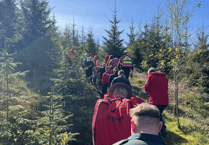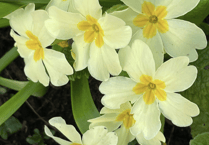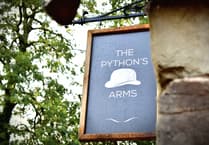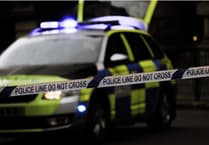His Majesty, King Charles III, visited Brecon Barracks after his visit to both Brecon Cathedral and Theatr Brycheiniog.
Upon arrival, His Majesty was greeted by the Brigade Commander, Brigadier Nick Thomas, as the Royal Welsh Band marched onto the square.
Based at the Brecon Barracks, the 160 Brigade have supported the people of Wales during the recent pandemic with UK Resilience Operations Joint Military Command leading on the delivery of support to the Welsh civil authorities. The Brigades also stood up as Joint Military Command, Wales, supporting the Operation London Bridge and the Coronation of Their Majesties.
The King had the opportunity to meet Welsh military mascots, including The Royal Welsh Goat, Lance Corporal Shenkin IV and 1st The Queen's Dragoon Guards Welsh Mountain Pony, Lance Corporal Emrys Forlan Jones.

His Majesty was then invited to join an outdoor reception. The King had the opportunity to meet the Honour Guard, 160 Brigade Headquarter Staff, Gurkha soldiers, and individuals from the Infantry Battle School.
His Majesty was then invited to join a photograph, which reflected the variety of military units and activity in Wales. As the King departed, he signed the visitor's book.
160th (Welsh) Brigade, based at Brecon Barracks, is the Headquarters for the British Army in Wales. The Brigade’s mantra is: Connecting the Army to Wales and understanding Wales for the Army, with a focus on the lived experience of Service personnel and their families. This includes those living in Wales, as well as those who are ‘Wales facing’.The Infantry Battle School’s contingent of Gurkha soldiers make up the Training Support Division. This Division is made up of around 100 personnel who post in from across the Brigade of Gurkhas for up to two years. There has been a Gurkha presence in Brecon since 1974. The Training Support Division holds a wide mix of trained individuals such as snipers, drivers, engineers, machine gunners, chefs, pioneers, and others.British Army units adopting animals as military mascots is a practice dating back to the 18th Century when the Royal Welsh recruited a goat. The tradition is believed to have started after a wild goat strayed on to the battlefield during the Battle of Bunker Hill in 1775, leading the Royal Welsh Fusiliers' colour party from the field.The regiment has also chosen a Welsh pony to keep in touch with their Welsh heritage and the tradition of the Welsh Cavalry charging into battle on horseback.





Comments
This article has no comments yet. Be the first to leave a comment.